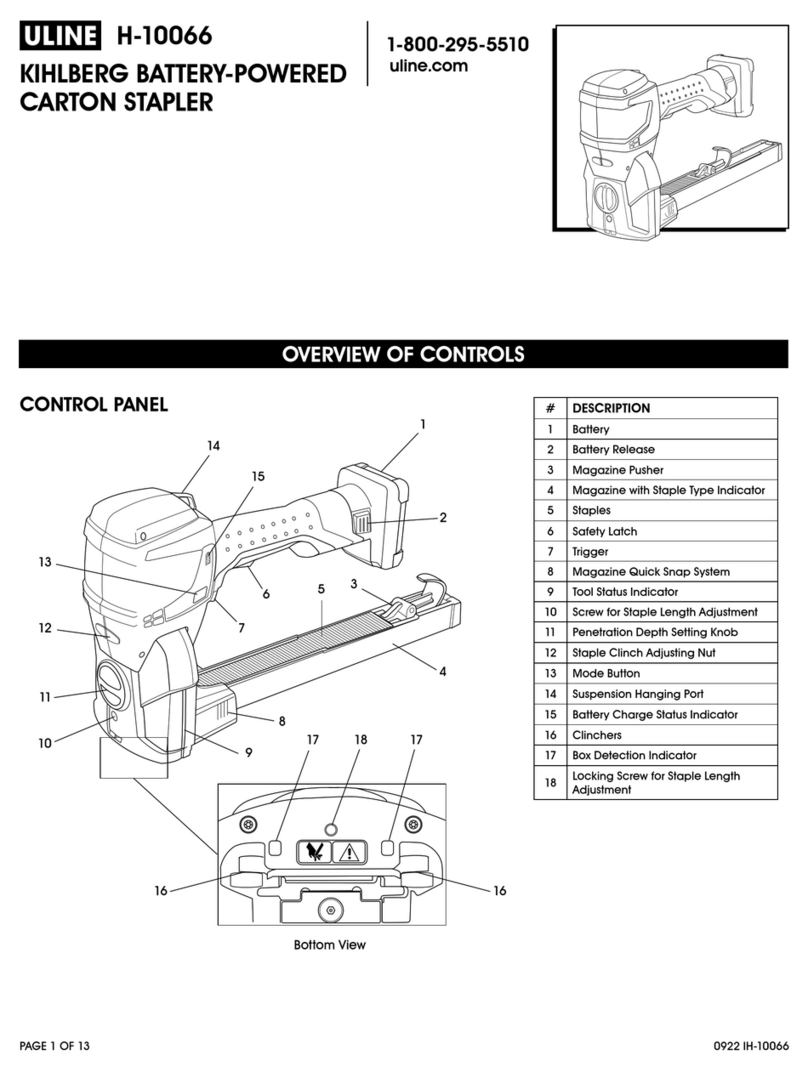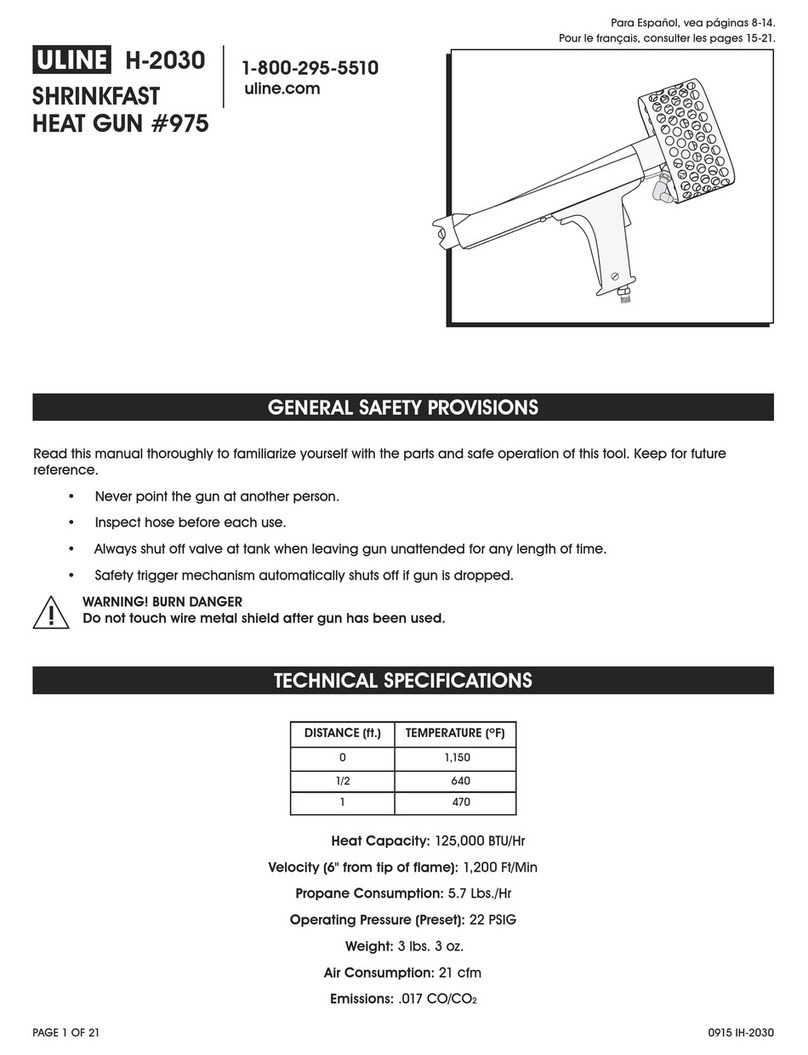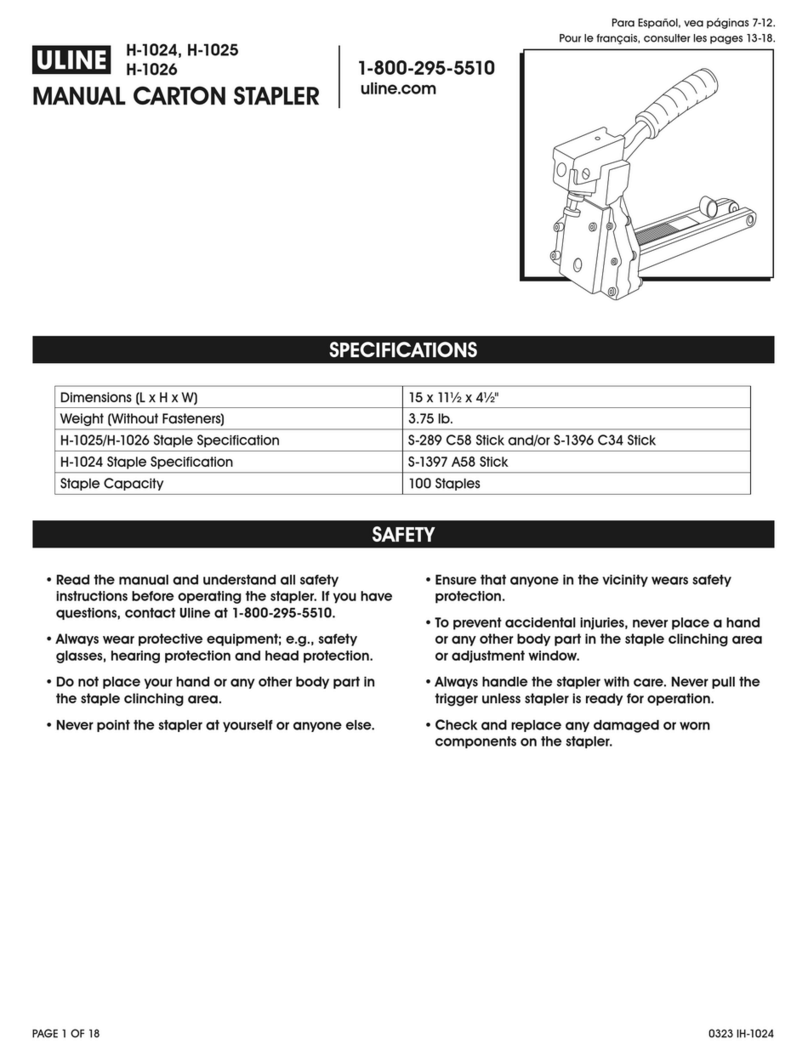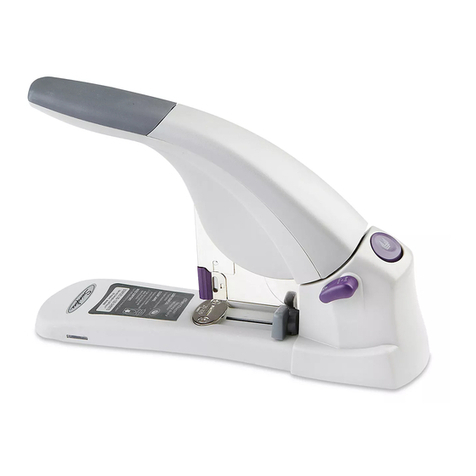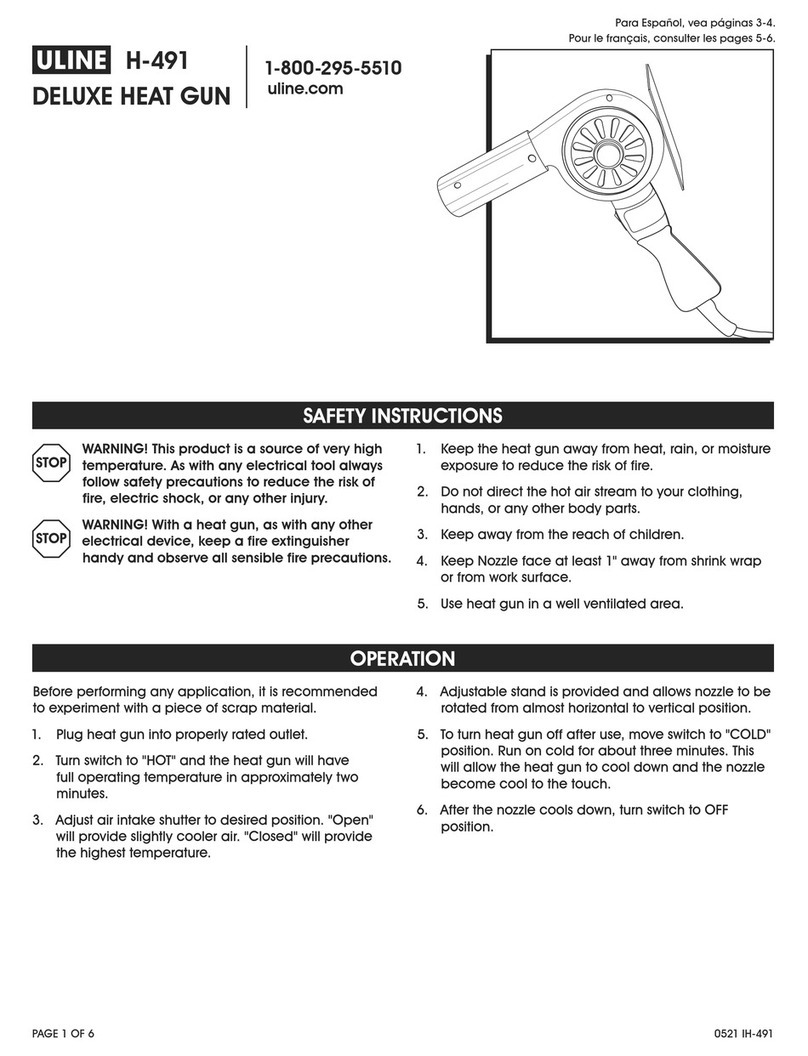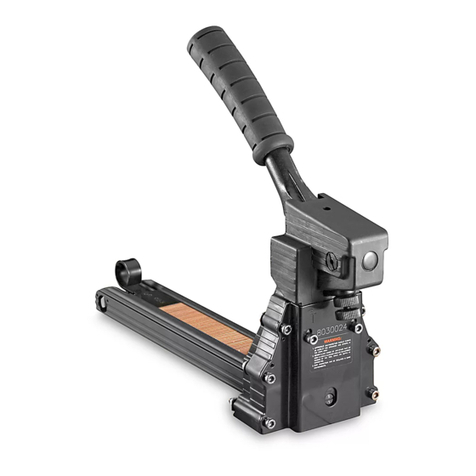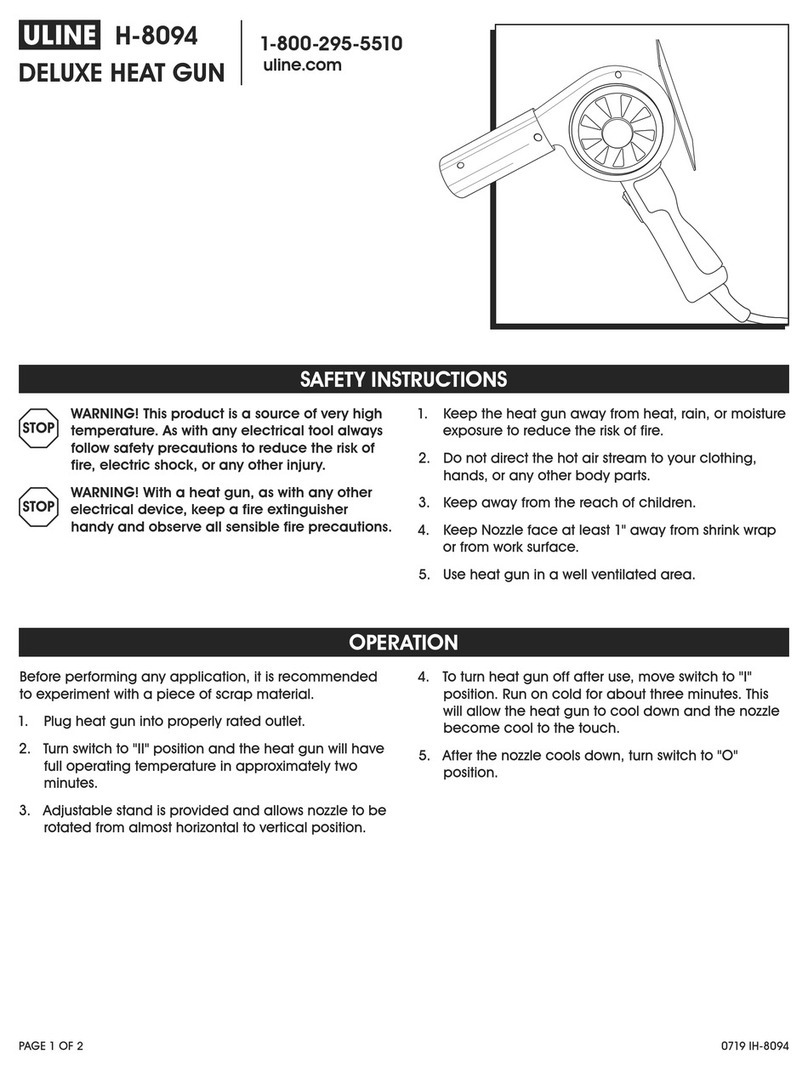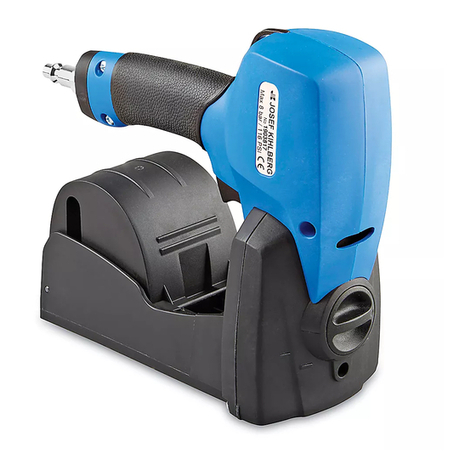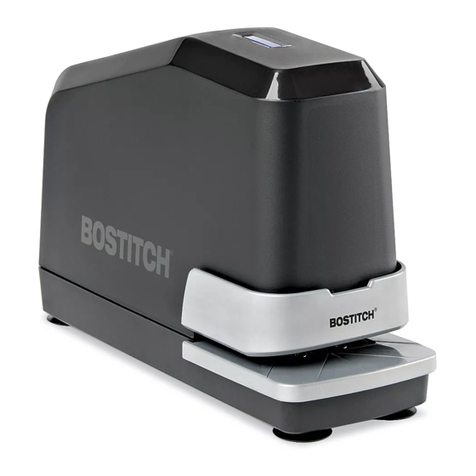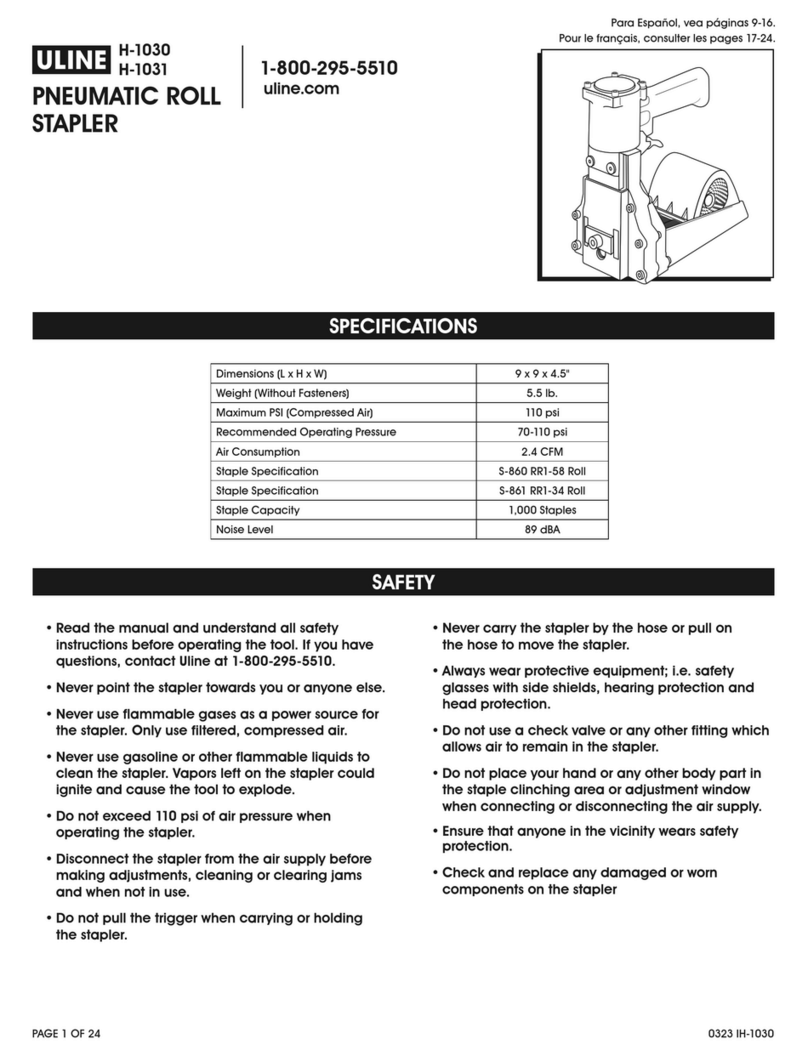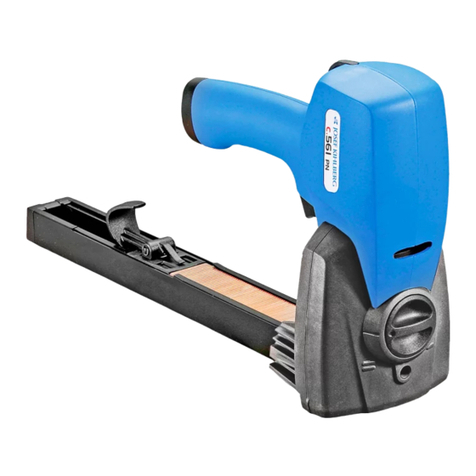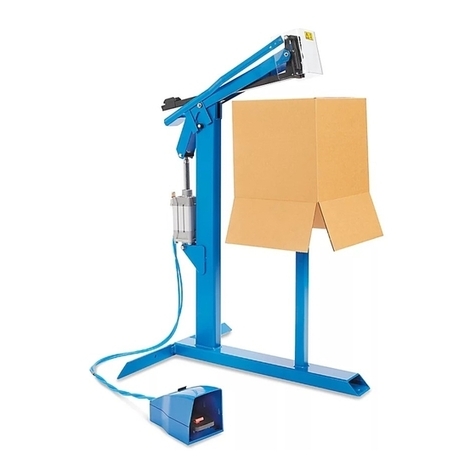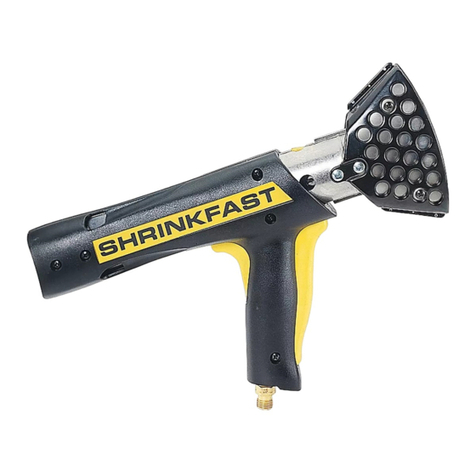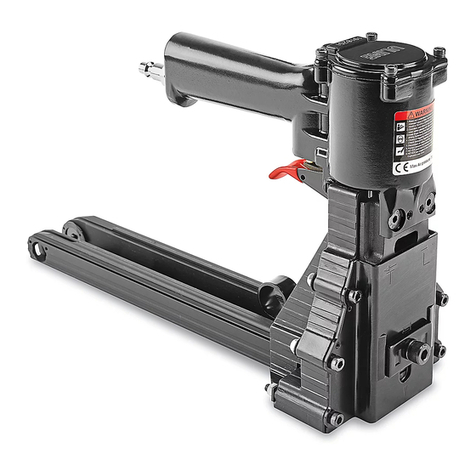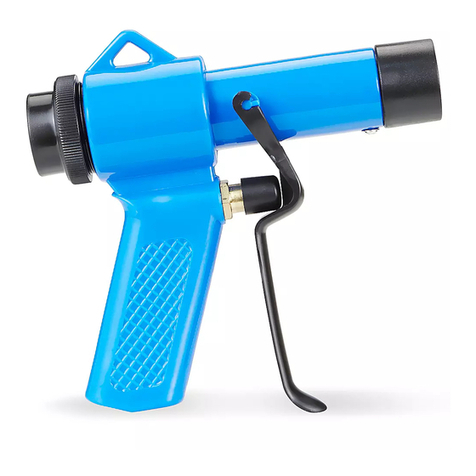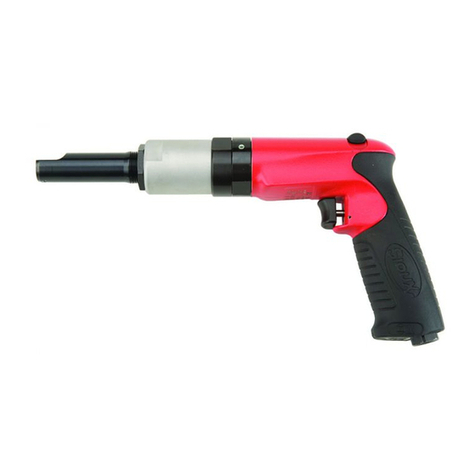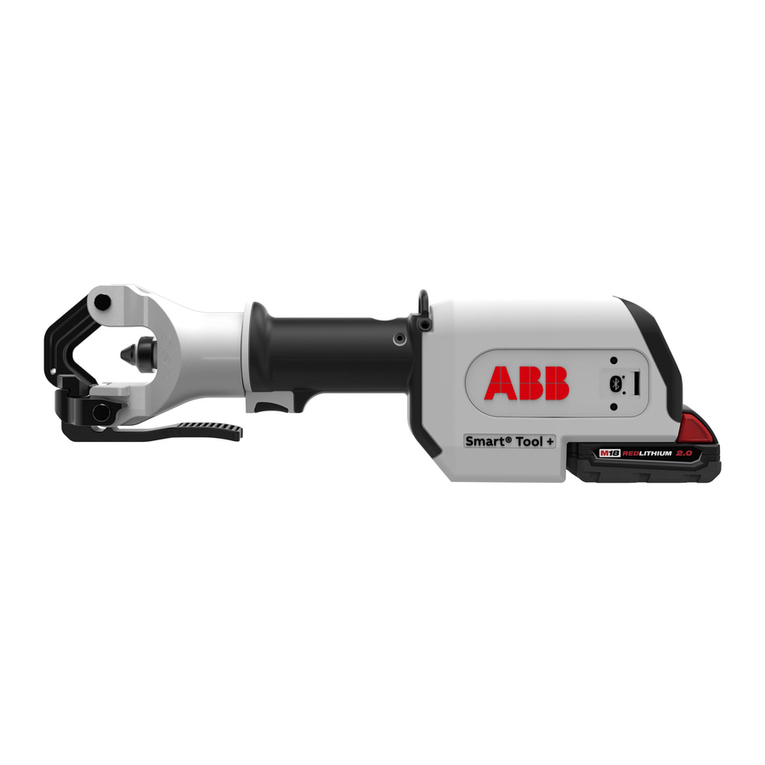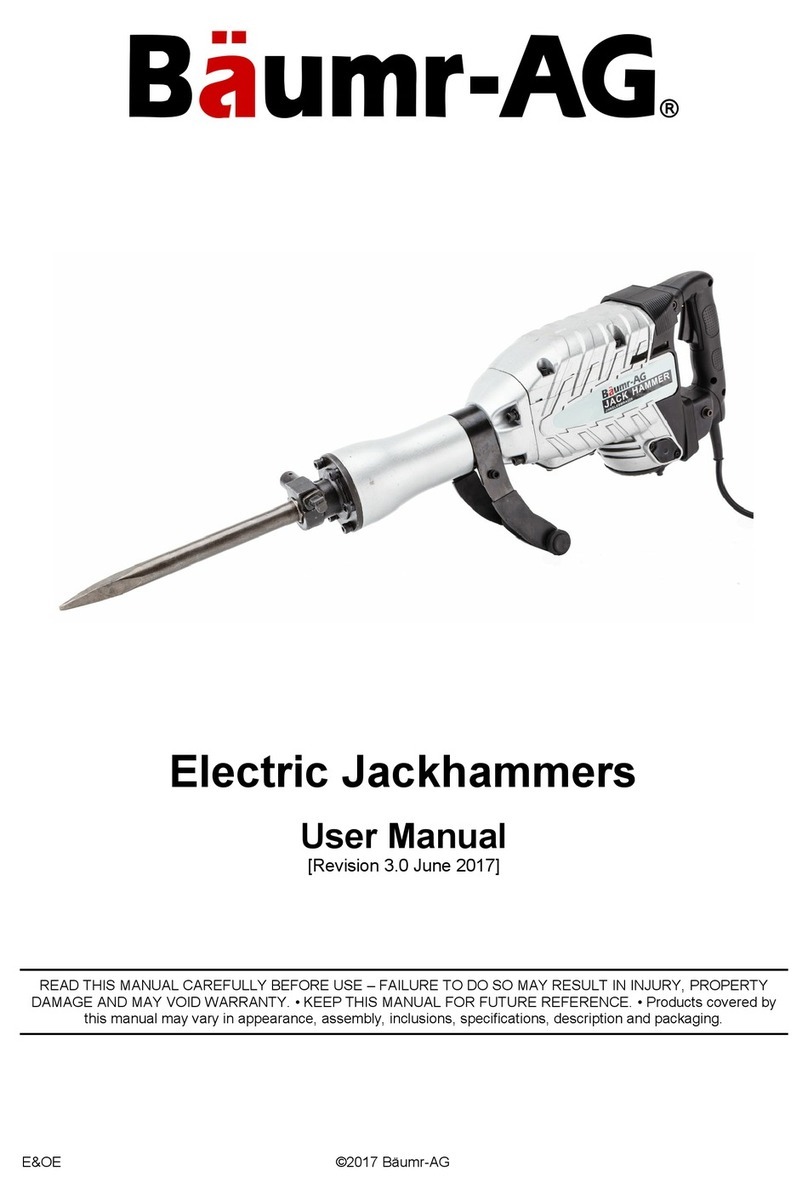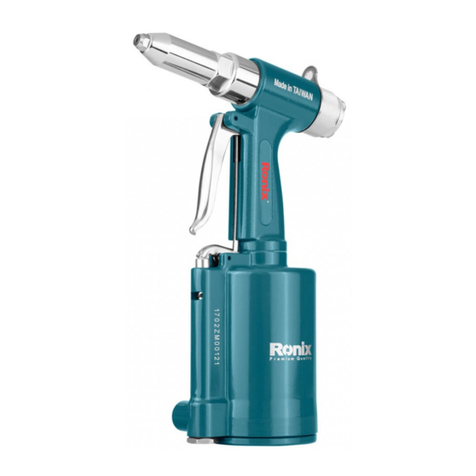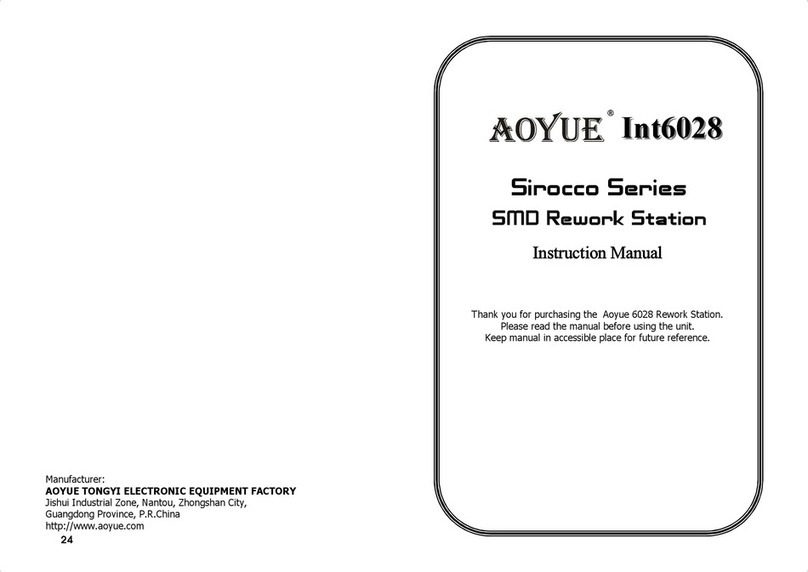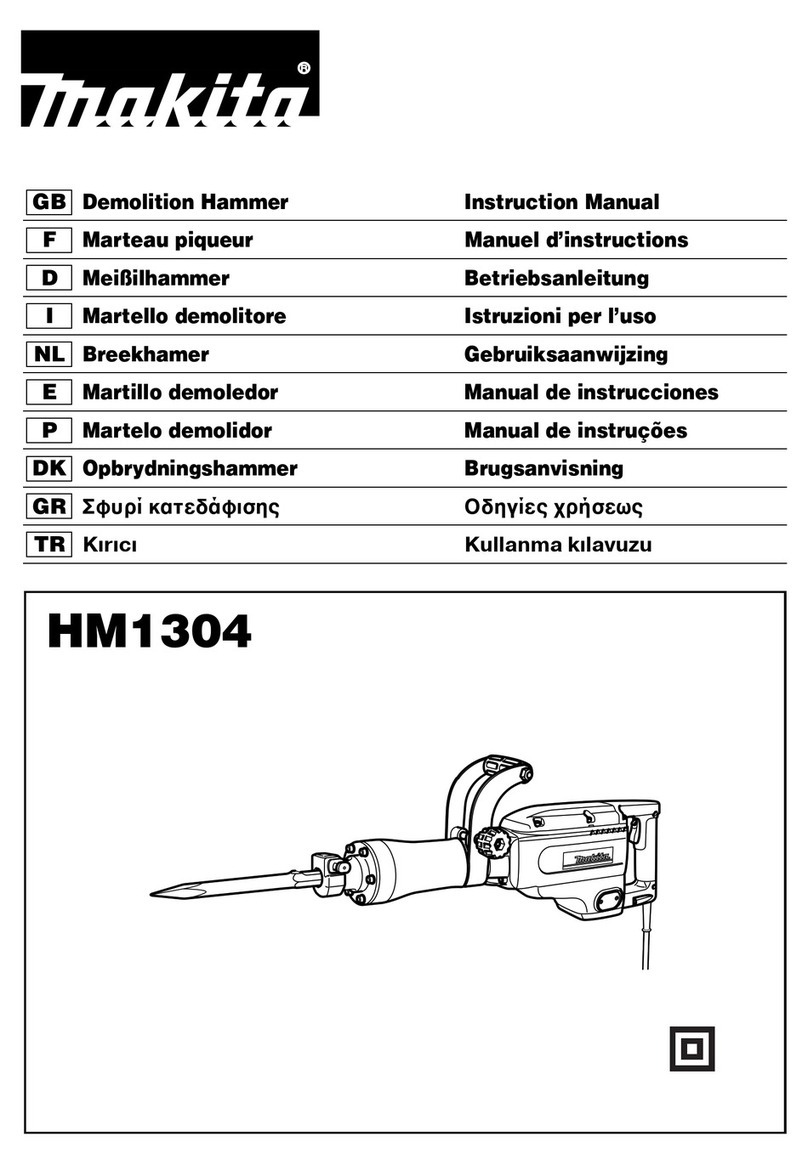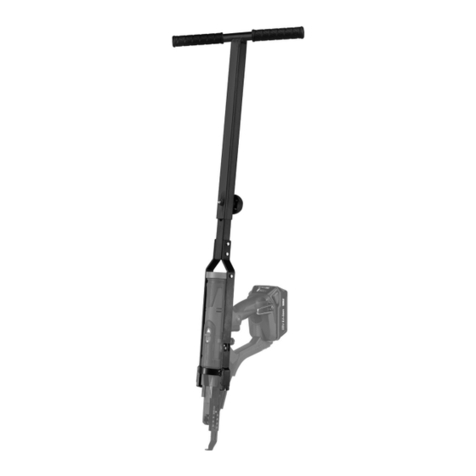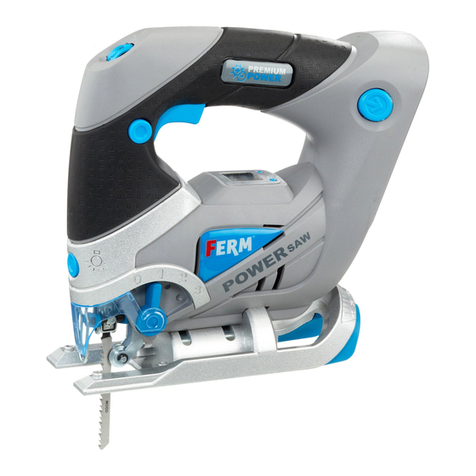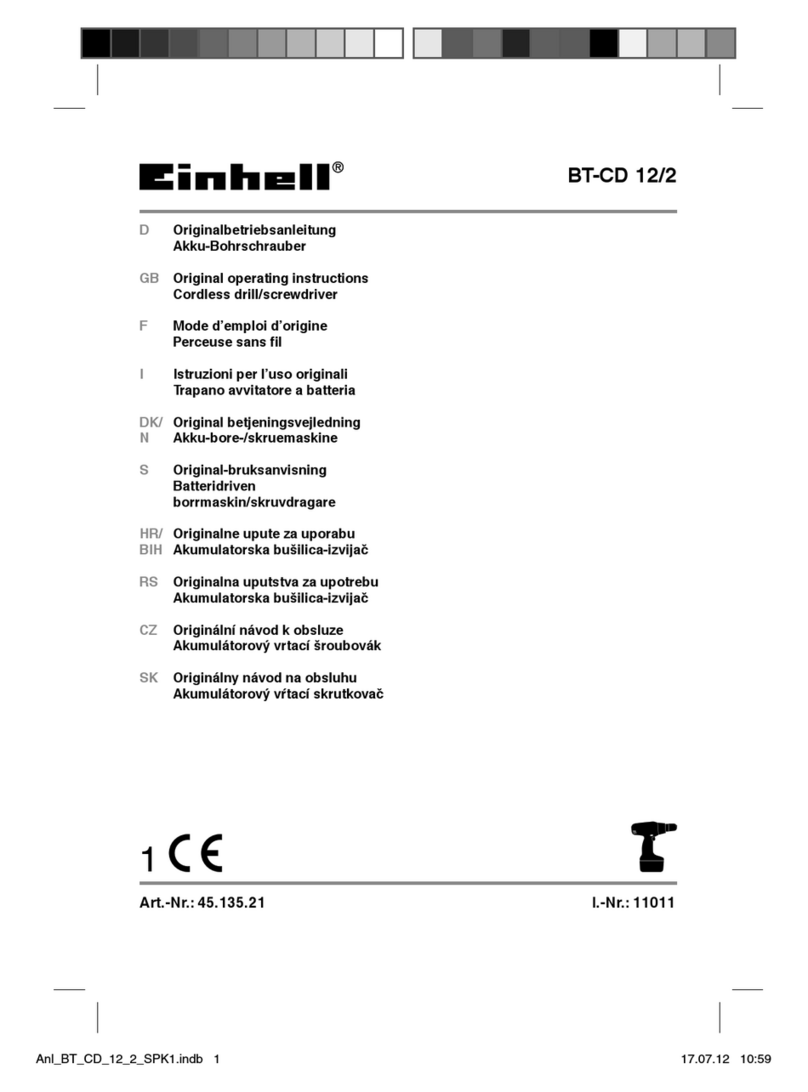
PAGE 2 OF 27 0621 IH-950
SHRINK FILM
Use only with shrink film (not all plastic films are shrink
film). Shrink film should be virgin plastic, not reprocessed
material. For light loads of 100 lbs. or less, 3 mil thick film
should work. For heavy weights or items (example, steel
drums at 2,000 lbs./pallet), use 6 mil or thicker shrink film.
• Gusseted film shrinks equally in both directions,
and tends to pull up and away from pallet. Length
should be longer than the height of the pallet.
• Centerfold film shrinks mainly in one direction and
has a reduced tendency to pull up off of pallet.
SHRINK BAG
Most bags list lay-flat length and width. To determine
what size bag you need, use the following example:
Load size: 47 x 30 x 36" (L x W x H)
Calculate the width of bag:
1. Add the width and length
30 + 47" = 77"
2. Add Fitting Allowance (4" to allow for ease of fit)
4 + 77" = 81" (This is the width bag you’ll need.)
Calculate the length of the bag:
1. Use 1/2 the length of the shorter side
1/2 of 30" = 15"
2. Add number from Step 1 to height
15 + 36" = 51"
3. Add Shrink Allowance (1" for each foot of height)
36" = 3', so 3" shrink allowance
51+ 3" = 54" (This is the length bag you’ll need.)
4. Bag size is 54 x 81" (L x W).
PROPANE TANK
Use only with vapor withdrawal propane tanks, NEVER
attach heat gun to a liquid withdrawal propane tank.
WARNING! Using a liquid withdrawal propane
tank clogs the orifice filter and may result in an
extremely dangerous long flame.
Tanks are available in 6, 8, 10, 20, 30 and 40 lb. sizes.
6 lb. tanks are adequate for intermittent use. Use larger
tanks for continuous use.
Tank Pressure – Depends on tank temperature. At 72ºF,
pressure is 110 PSI; at 0ºF, pressure drops to 22 PSI. In
use, tank pressure drops due to evaporation process of
converting liquid propane to propane gas. Tank may
drop to 0ºF with ice appearing on the outside. Propane
pressure may drop below 15 PSI.
WARNING! DO NOT run the gun when tank
pressure drops below 15 PSI.
• For continuous operation, use multiple tanks,
switching the gun from one to another.
• Using an ordinary desk fan to blow air on the tank
will prevent it from icing up.
VENTILATION
In use, this heat gun produces carbon dioxide, carbon
monoxide and water vapor.
WARNING! Prolonged exposure to carbon
monoxide (CO) is lethal. Provide adequate
ventilation when gun is used indoors.
To maintain a safe CO concentration (50 parts per
million as set by OSHA Standard 1910.93), ventilation
requirements are 2,000 cu. ft./min. of fresh air while gun
is operated at maximum operating pressure of 30 PSI.
Ventilation capacity should be sized proportionally for
different production rates.
EXAMPLE: Based on a 1½ minute heating cycle
per pallet, fresh air requirements are 3,000 cu.
ft./pallet.
If the production rate is 10 pallets/
hour,
a ventilation system needs to provide
500 cu. ft./minute.
In areas where ventilation is provided by open doors or
windows, safe CO levels will be maintained as long as
room temperature does not exceed 150ºF.
GENERAL INFORMATION
